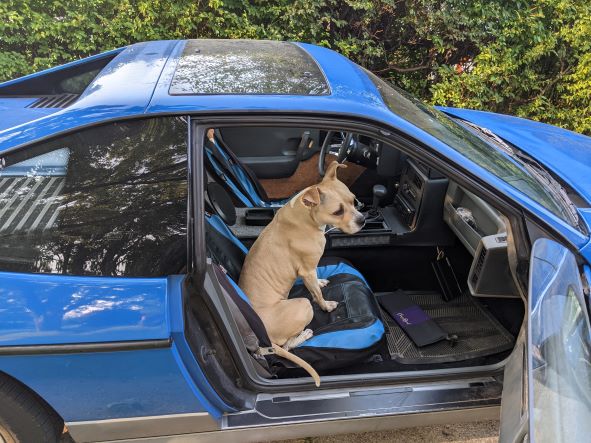Simon's Portfolio
Projects
Fiero Interior
Goals
Step 1 in the engineering design process is always to figure out the problem. In this case, my problem can only be defined once I actually know what I want. I guess this is step 0 in the engineering design process.
-
I already have a reliable daily driver, so there’s no need to keep it road-worthy all the time, so my scope can be quite large.
-
Audio? supplied by the engine
- Plus I need to be able to diagnose critical squeaks, rattles, bumps, dings, pops, bangs, and assorted other NVH and BSR.
-
Performance? as much as is reasonable. This means we can ignore the need for sound dampening and other frivolities.
-
Passenger comfort? I want the car to feel like you just might not come out of the drive totally intact, or totally sane, so we don’t want any passenger comfort.
After taking a quick peak at the quality, or lack thereof, that came with the car, I settled on gutting the interior, reminiscent of home brew rally racers (flocked dash not included).
Teardown
Step 1 of the engineering design process is figuring out the problem, or as Mao says: “When you have investigated the problem thoroughly, you will know how to solve it”. I am not investigating pre-communist China, but the principle holds.
My investigation consisted largely of taking stuff out of the car, looking at it, and saying one of two things: “huh, that sucks” or “wow, this car is old”.
 I present to the reader: the Fiero as purchased. Banana demonstrates her appreciation by calling shotgun.
I present to the reader: the Fiero as purchased. Banana demonstrates her appreciation by calling shotgun.
The first to go was center console and unfortunate aftermarket audio installation.
This exposed the carpet to be far from factory fresh. It was placed gently into the car ontop of fresh, inexpensive jute that had been sporadically secured with duct tape. I would love to do it right, but I don’t think I have it in me at the moment to do interior decoration. This needs so much more fundamental work.
Carpeting
Getting the attempted carpet installation out was relatively easy. I still have the majority of the jute and carpet in my garage just in case I want to do it right. I’ve moved that to the bottom of my to do list permanently.